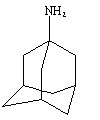| Prevention
by Vaccination. Credit:
http://virology-online.com/viruses/Influenza4.htm
Vaccines against influenza have
been around for 50 years. Despite this, the efficacy of
influenza vaccines is still questioned, and the ability of
vaccines to limit epidemic infection has not been proven.
1. Immunity to
Influenza - the results of challenge
studies indicated that immunity is induced by the host responses
to the virus haemagglutinin (HA) and to neuraminidase (NA).
Antibody against HA is the most important component in the
protection against influenza viruses. In addition to conferring
relative protection against infection, serum HI is reported both
to reduce the severity of infection and decrease virus spreading
in infected persons. Serum anti-neuraminidase Ab has also been
shown to contribute protection against influenza infection. A
generally held view is that serum HI antibody is more important
in determining immunity than anti-neuraminidase antibody. It is
clear that an influenza vaccine must contain both HA and NA
antigens in a form which will stimulate the production of
neutralizing antibody, local IgA antibody and possibly cellular
immunity.
2. Types of vaccine
- Whole virus
vaccines - whole inactivated virus
vaccines were the first influenza vaccines to be produced.
The currently circulating strain of influenza is inoculated
into embryonated eggs, harvested 2-3 days later and
inactivated. this vaccine confers protection in 60-90% of
vaccinees and the protection lasts for 1-5 years, depending
on the vaccine strain and the age of the vaccinee. However,
the subsequent infecting virus may show slow antigenic drift
and the vaccine induced antibody will be less effective in
conferring protection against the new strains.
- Split virus
vaccines - Because of the high
incidence of reactions seen in vaccinees given whole,
inactivated virus vaccine, attempts have been made to
produce a vaccine which is less reactogenic but conserving
immunogenicity. Split vaccines were prepared inactivated
particles disrupted with detergents. These vaccines have
been shown to induce fewer side effects in the vaccinees and
are just are immunogenic as whole virus vaccine. Whole virus
vaccine should not be used in children.
- Subunit virus
vaccines - subunit vaccines have
been prepared which contained only the HA and NA antigens.
These are used in aqueous suspension or may be absorbed to
carriers such as alhydrogel. Volunteers given subunit
vaccines experienced fewer reactions than those given whole
virus vaccines and those given aqueous vaccine experienced
fewer reactions than those given the absorbed subunit
vaccine. therefore, the best vaccines available at present
are the aqueous subunit vaccines, although some authorities
have questioned the effectiveness of subunit vaccines.
- Live attenuated
vaccines - there is experimental
evidence that immunization with live, attenuated influenza
virus vaccines induce a solid immunity than do inactivated
vaccines. Normal methods for attenuation, such as repeated
passages and temperature adaptation require a long period to
complete, and probably too long for the vaccine to become
available for immunization against the current influenza
strain. To circumvent this problem , already attenuated
strains have been mixed with wild-type virus to produce
recombinants which contain the RNA fragments which code for
wild-type HA and NA, and all the other genetic material form
the attenuated strain. These recombinants can be produced
relatively quickly. When given intranasally, produced few
side effects.
Although research to develop
live attenuated vaccines has been pursued for 20 years, basic
problems remains particularly in the area of purification. The
vaccine must also be shown to be attenuated and safe. It is
estimated that if the safeguards are to be satisfied, 2 years
would be needed for the development of an attenuated vaccine.
This makes their development impractical , since by the time the
vaccine virus can be made available, the epidemic strain against
which the vaccine has been prepared would have disappeared. For
an attenuated vaccine to be a practical proposition, the
development time must be down to 6-9 months.
3. Recommendations
- At present, no live attenuated vaccine is available for
general use. The vaccines that are currently available are
produced from virus grown in embryonated eggs. The aqueous
subunit vaccine is the most acceptable formulation. These
vaccines produce few reactions and confer protection in 60-90%
of vaccinees. Vaccination is recommended for the elderly and
individuals at risk for severe infection. In addition, key
personnel n industry and social and medical services. It is
highly debatable whether the vaccine should be given to the
general population. Influenza immunization is strongly
recommended for adults and children with any of the following:
1. Chronic respiratory
disease
2. Chronic heart disease
3. Chronic renal failure
4. Diabetes mellitus and other endocrine disorders
5. Immunosuppresion due to disease or treatment
Immunization is also
recommended for residents of nursing homes and old peoples'
homes and other long stay facilities where rapid spread is
likely to follow. Two types of vaccines are available in the UK;
"split virus vaccines", and "surface antigen" vaccine which
contains highly purified HA and NA antigens prepared from
disrupted virus particles. Both vaccines are suitable for use in
children.
|



